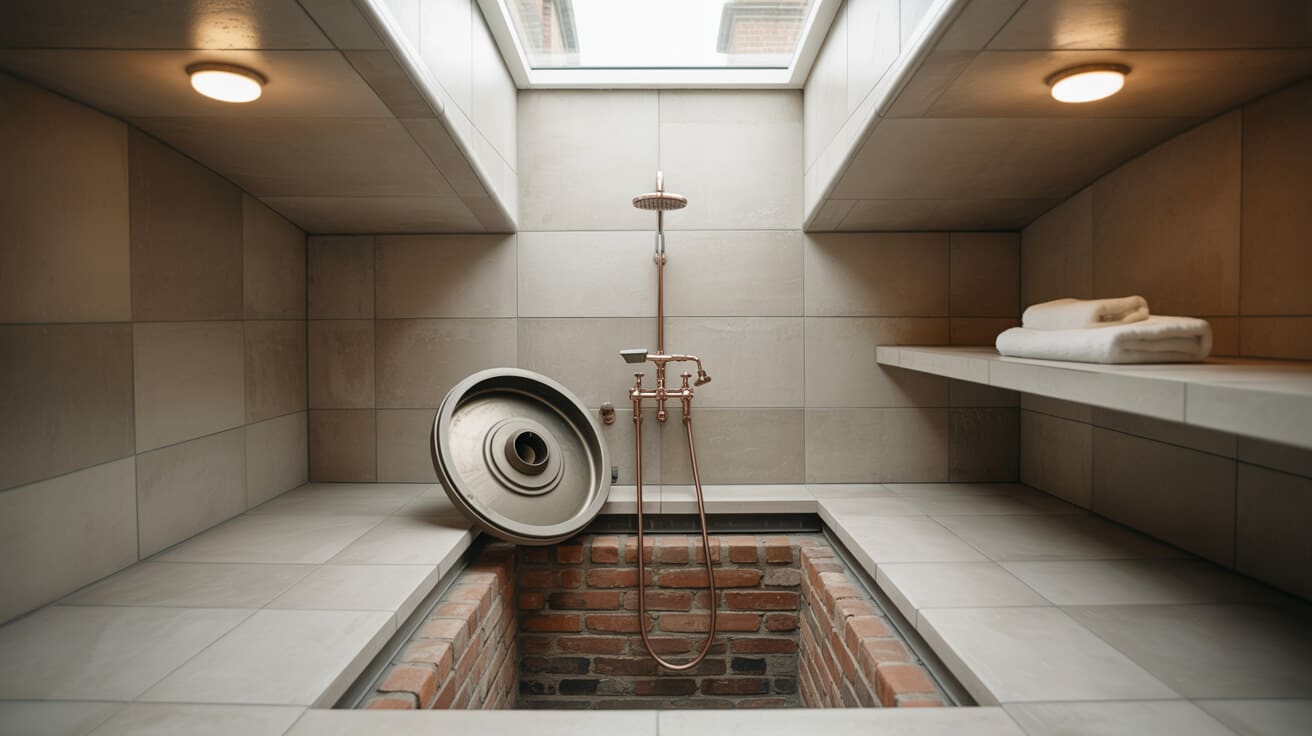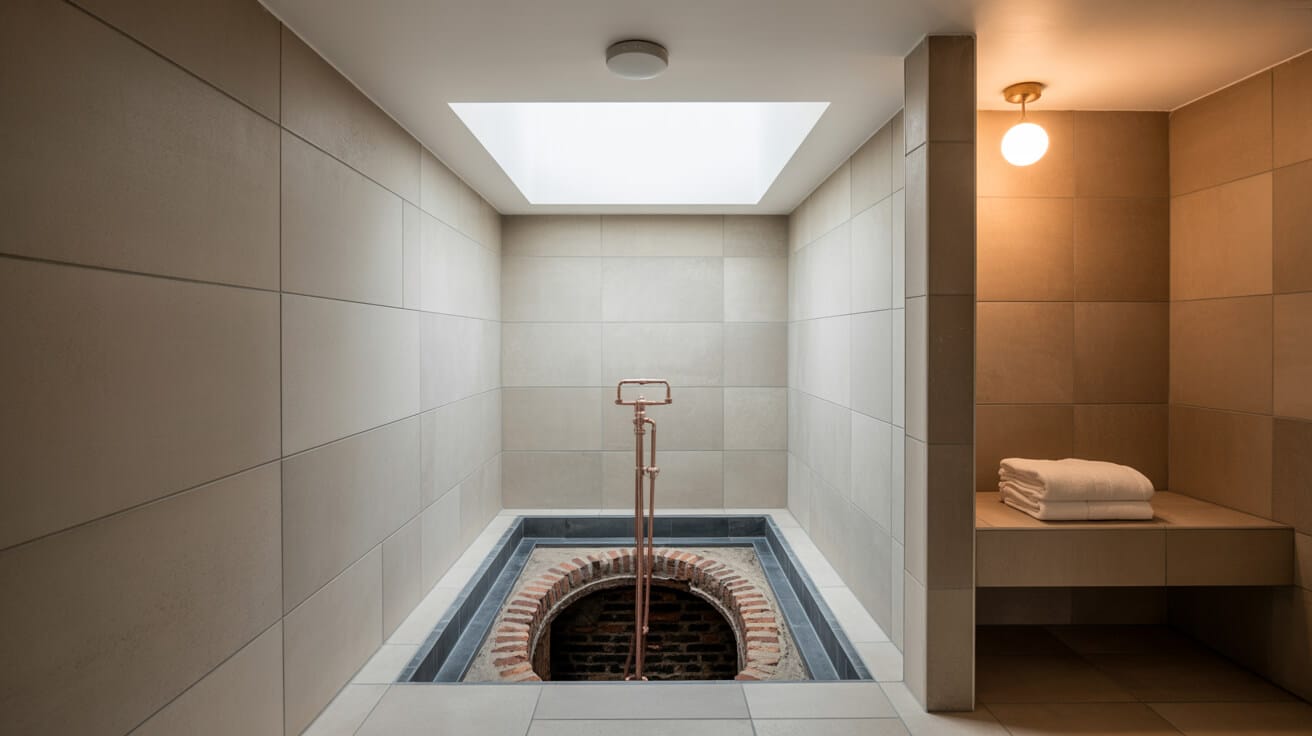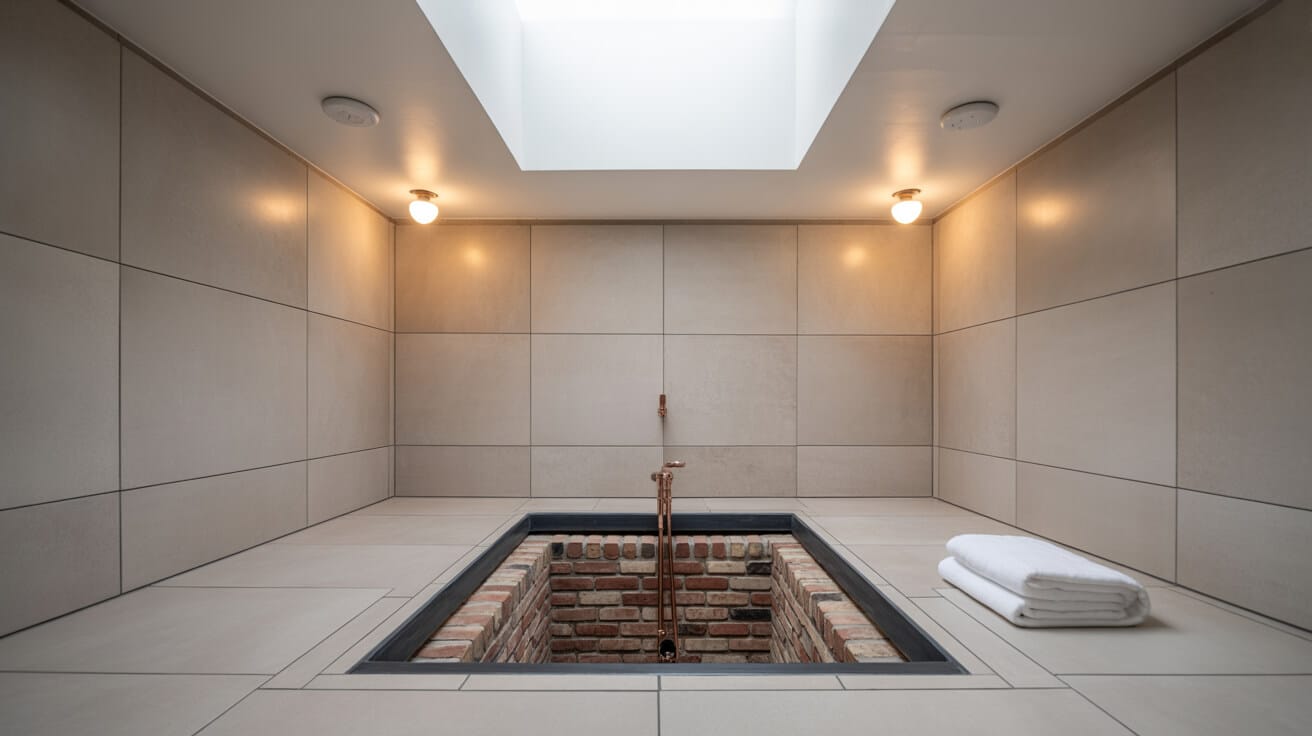In property maintenance and facilities management, the condition of subsurface inspection chambers fundamentally shapes your ability to protect water quality, maintain reliable drainage, and comply with statutory obligations. Deteriorated mortar joints within manholes can foster persistent leaks, blockages, or structural faults, leading to wider consequences such as ground destabilisation, unpleasant odours, or regulatory action against your company. Repointing brickwork in these sites embodies a blend of traditional tradecraft and modern compliance assurance, demanding skilled intervention under tightly defined methods and safety protocols. By restoring bond strength, watertightness, and accessibility, companies such as Plumbers 4U empower you to future-proof drainage infrastructure against escalating maintenance needs and environmental liabilities.
Etymology or Name Origin
The term “manhole” originates from historic urban sanitation practices, denoting a human-accessible opening to underground service spaces. “Brickwork” refers to assemblies constructed from discrete fired clay or concrete masonry units, a term rooted in Anglo-European building traditions but widely incorporated in international technical standards. “Repointing” describes the act of removing failed mortar from the exposed faces of joints and integrating new, compatible mortar while retaining the original brick matrix. These linguistic formulations mirror the evolution of trade specialisation, regulatory frameworks, and technical lexicons across multiple eras of built-environment stewardship.
Overview and Context
Brickwork manholes serve as vital junctions and access chambers for drainage runs, providing critical observational and operational touchpoints within a property’s below-ground plumbing system. Their designs vary, but each is fundamentally engineered to compartmentalise service flows, support inspection activity, and isolate problem sources such as blockages or leaks. Both public and private drainage networks commonly employ brick due to its compressive strength, thermal resilience, and adaptability when constructing chambers with irregular geometries or in constrained sites. Degradation typically manifests as mortar decay, voiding, or biological colonisation, with corresponding risks of infiltration and exfiltration that can disrupt system equilibrium.
Inspection Chamber Function
Inspection chambers exist to facilitate regular survey, clearance, and repair work—functionality that is indispensable for the longevity and legal compliance of your drainage assets. Their location at system nodes enables localised interventions and minimises collateral disturbance when addressing faults or performing upgrades. Regular monitoring ensures any mortar degradation is detected early, granting you the opportunity to schedule repointing before critical failures emerge.
Common Materials and Designs
While concrete and plastics are increasingly specified for new installations, legacy stock and heritage assets predominantly feature brickwork. Engineering bricks are preferred for their low water absorption and resistance to the acids and sulphates common in drainage effluent. Chambers may be round, square, or elliptical, designed to suit hydraulic demands and spatial limitations.
Role in Plumbing Systems
The condition of manhole chambers directly affects the performance of the entire underground pipework network. Mortar loss or cracking not only threatens localised chamber function but can compromise connected branch lines, leading to water loss, root ingress, or systemary rodent invasion. As structural anchors for critical services, well-maintained brick chambers underpin your property’s ability to maintain hygiene, safety, and asset compliance.
History
Early Developments
The deployment of brickwork in subsurface infrastructure dates to the early industrial revolution, when rapid urbanisation necessitated organised, concealed waste removal. Hand-moulded bricks laid in lime mortars formed the foundation for the first widespread adoption of accessible sewer networks in the United Kingdom and continental Europe, driven by public health reforms and civil engineering advances.
Standardisation and Industrial Era
The late nineteenth century brought codification and standardisation of drainage design, with codes like the UK’s Model Byelaws outlining required depths, dimensions, and permissible materials for manhole construction. The evolution of sulphide- and acid-resistant mortars in the twentieth century reflected emerging awareness of chemical attack from waste streams, and the need for increased durability in mission-critical infrastructural elements.
Modern Approaches
Contemporary practice integrates mechanical tools for mortar removal, advanced personal protective equipment (PPE) for operatives working in confined or contaminated spaces, and blends sulphate-resistant cementitious mortars or polymer-modified mixes for new jointing. Digital recordkeeping allows property managers to log interventions, schedule routine inspections, and meet increasingly rigorous insurance and regulatory expectations. Plumbers 4U and similar service providers continuously adapt to these developments, employing both heritage and future-facing solutions tailored to site-specific risk profiles.
Impact of Regulation
Legislation such as Building Regulations Part H, the Confined Spaces Regulations, and environmental protection statutes now dictate many aspects of repointing work, from initiation (surveys, permits) through completion (waste management documentation, final validation reports). These requirements ensure not only safety but also create a reliable paper trail to protect your interests in claims or audit situations.

Concept and Description
Chamber Anatomy
A typical brick-built manhole consists of an access shaft extended downward from the surface, terminating in a benching or base designed to smooth water flow and limit debris accumulation. Key elements include the chamber walls, flow channels (benches and channels), cover slabs or lids, inlets and outlets, steps/rungs, and, in some cases, flow control devices or overflow structures.
Structural and Hydraulic Roles of Brickwork
Brick walls offer compressive load support, maintain alignment of pipe inlets and outlets, and provide a substrate for watertight mortar joints. Mortar entails a dual function: cohesive (fusing the assembly) and hydraulic (preventing unwanted water exchange between chamber interior and surrounding soil strata). Multi-point failures across the joint matrix can yield rapid system dysfunction, necessitating prompt attention to exposed or friable mortar.
Mechanisms of Failure
Common failure pathways include gradual leaching of lime from joints, sulphate attack, cyclic freezing and thawing, biological ingress from roots or burrowing fauna, and settlement of the chamber’s foundation. Each scenario disrupts both the visible appearance and latent performance of your manhole infrastructure. Distinguishing between superficial and structural defects often calls for specialist diagnosis and may inform the repair scope—repointing alone, relining, or localised rebuild.
Methodological Segmentation
A clear separation exists between repointing (removal and renewal of joint faces), relining (adding new internal lining to compensate for broad-scale wall loss), patch repair (addressing discrete localised defects), and full reconstruction. Proper diagnosis is essential for you to choose a repair regime that is both effective and resource-conscious.
Functionality, Purpose, and Applications
Main Function
The primary purpose of repointing is to restore structural integrity and watertightness to the chamber, forestalling infiltration of groundwater (which can dilute foul flows and induce blockages) and preventing loss of contaminated water into the surrounding soils.
Intended Outcomes
Proactive maintenance targeting mortar renewal delivers compliance with statutory mandates, helps preserve ground stability, and minimises risk exposure from insurance claims or environmental incidents. You avoid costly emergency interventions, ensure downstream reliability, and satisfy the documentation needs of asset managers and regulators.
Areas of Deployment
- Domestic: Typical repointing arises from scheduled maintenance surveys, responding to visible leaks, or as a result of a property transaction audit.
- Commercial/public: Facilities teams integrate scheduled inspections and repairs into wider planned preventative maintenance regimes, supporting uninterrupted site functions and regulatory reporting cycles.
- Mixed use: Multi-unit blocks, schools, hospitals, and institutional assets depend on regularly repointed chambers to maintain minimum hygiene and operational standards.
Integration with Remedial Works
Repointing may occur alongside root removal, CCTV survey, pipe relining, or benching repairs, as part of a comprehensive renewal of the drainage matrix. Holistic project management by partners such as Plumbers 4U ensures efficient sequencing and reduces site downtime for your project.
Classifications, Types, and Variants
Variants by Shape and Material
- Circular: Efficient for hydraulic flows; standard in many utility networks.
- Rectangular or square: Simpler to construct, common in older properties.
- Segmented or hybrid: Combined with pre-cast sections for complex layouts.
Types of Mortar and Brick Specifications
- Ordinary Portland cement mortars: Historically common, rarely used now in foul drainage due to sulphate attack risk.
- Sulphate-resisting cements: Modern standard for hostile environments.
- Lime-based and conservation mortars: Used in heritage assets to balance load distribution and vapour permeability.
- Engineering bricks: Classified by tolerance to acids and moisture.
Repointing Methods and Joint Profiles
- Flush joint: Standard, most resistant to water collection.
- Weatherstruck: Slopes mortar to shed standing water.
- Recessed: Aesthetic in conservation, but less water-shedding.
- Specialist: Required for contaminated sites or where gas-tightness is desired.
Systems, Tools, and Methodologies
Survey and Preparation
- Condition assessment: Use of torch, mirror, CCTV for comprehensive survey.
- Risk protocols: RAMS generated for every confined entry, with atmosphere monitoring and communication plans.
- Site setup: Traffic and pedestrian barriers, spoil containment, and tool cleaning protocols.
Defective Mortar Removal
- Hand raking: Traditional, enabling control, essential for heritage assets.
- Mechanical raking: Accelerates process, used with dust or vacuum controls for safety.
Mortar Selection and Mixing
- Confirm compatibility with paired brick type.
- Measure additives for chemical resistance (pozzolans, polymers).
- Consistency and setting time matched to exposure and temperature conditions.
Application and Compaction
- Pointing trowels and finger joints for precise packing of fresh mortar.
- Compact thoroughly to prevent voids.
- Profile finished with jointing iron for consistent appearance and durability.
Curing and Reinstatement
- Shield work from wind, rain, or frost.
- Reinstate site to pre-repair state: lid refitting, debris exclusion, reinstatement of previous paving or turf.
Confined Space and Safety Procedures
- Compliance with Confined Spaces Regulations by equipping operatives with gas monitors, harnesses, escape routes, and maintained line-of-sight supervision where chambers are deep or at risk of atmospheric hazard.

Stakeholders and Entities Involved
Roles and Responsibilities
- Property owners or landlords: Authorise and oversee maintenance, responsible for asset compliance.
- Facilities managers: Coordinate schedules and reporting, interface with insurers and regulators.
- Contractors and supervisors: Plan and execute repointing, ensuring all standards and documentation are met.
- Surveyors and assessors: Inspect and document repairs, specify additional works if needed.
- Health and safety officers: Review RAMS, sign off on work permits, investigate incidents.
- Plumbers 4U: Delivers fully accredited, safety-aligned, and warranty-backed repointing service, advocating for clarity, safety, and compliance at every project phase.
Legal, Regulatory, and Ethical Considerations
Construction Standards
- BS EN 752 for drainage systems.
- Building Regulations Part H for drainage design and maintenance in England and Wales.
- Manufacturer’s technical sheets for brick and mortar selection.
Safety and Confined Space Law
- Confined Spaces Regulations 1997 dictate controlled entry, continuous monitoring, emergency readiness for all below-ground repairs.
- HSE guidelines for working at height, manual handling, and respiratory protection.
Environmental Management
- Waste handling must follow Duty of Care protocols, with transportation using licenced carriers, and disposal at authorised sites.
- Runoff containment is enforced to avoid contamination of watercourses.
Professional Qualifications
- Certified training in confined space operations.
- Company and site accreditations such as WaterSafe, WRAS, or local council-approved lists.
Ethical Delivery
- Transparent billing and defect documentation for clients.
- Timely communication on unanticipated discoveries or delays.
- Clean worksite handover, maintaining trust and reducing downstream liability for you.
Performance Metrics, Data, and Measurement
Inspection Methods
- Visual assessment by experienced supervisors.
- CCTV post-repair scan to confirm joint uniformity and absence of displaced debris.
Reporting and Certification
- Written repair reports with photographs, materials used, and compliance sign-off.
- Maintenance logs retained for warranty, insurance, and audit purposes.
Repair Life and Durability Benchmarks
- Sulphate-resisting mortars typically guarantee decades of service in benign environments.
- Accelerated ageing occurs in sites experiencing continual wetting, movement, or chemical pollution.
Documentation and Monitoring
- Progressive records enabling trend analysis for large property portfolios managed by your company or entity.
Challenges, Barriers, and Limitations
Technical Barriers
- Limited access due to covers, traffic, or site congestion.
- Structural instability or historical fabric may necessitate more invasive interventions.
Environmental and Occupancy Issues
- Groundwater infiltration complicates mortar set and may require dewatering.
- Works in occupied buildings require noise, hours, and site containment for minimal tenant or staff disruption.
Material, Time, and Safety Constraints
- Weather or seasonal risks may limit effective mortar curing or safe confined space entry.
- Full repointing is inappropriate where bulk wall movement has occurred or where bricks display systemic failure—calling for rebuild or relining.
Impact, Influence, and Legacy
Properly executed manhole repointing maintains the structural coherence, flow reliability, and regulatory status of your drainage infrastructure. Benefits cascade from increased service life and minimised unplanned outages to improved health and safety outcomes for building occupants and the wider community. Insurers, facilities managers, and compliance auditors look for proof of sustained maintenance when evaluating risk and liability profiles. Plumbers 4U upholds these standards through continual training, transparent process documentation, and proactive stakeholder engagement.
Future Directions, Cultural Relevance, and Design Discourse
Enhanced mortar technologies, such as high-performance polymer and crystalline mixes, offer longer service intervals and improved performance in chemically aggressive or dynamic sites. The introduction of automated brickwork inspection, sensor-based performance tracking, and modular repair robotics is shifting accepted best practices, lowering operational risk, and supporting predictive maintenance models. Regulatory evolution increasingly centres on integration of sustainable materials and the digitization of asset logs, reflecting the cultural shift toward transparent, data-driven infrastructure management in modern cities. The humble manhole, once unnoted, now represents your organisation’s commitment to environmental resilience, operational excellence, and built-environment stewardship.

